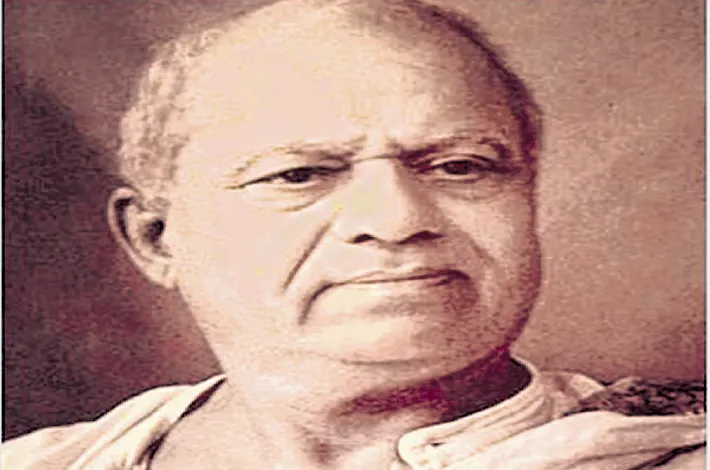Handwriting, anyone?
26-05-2025 12:00:00 AM

We are living in an era which is dominated by digital devices, where keyboards and touchscreens have largely replaced pen and paper. However, the act of handwriting retains a unique and irreplaceable charm. As Ruskin Bond poignantly illustrates in Landour Days: A Writer's Journal, writing by hand—whether on a grassy knoll with a pencil or in a quiet study—offers a tactile, grounding experience that machines cannot replicate.
Beyond its nostalgic allure, handwriting has profound cognitive, emotional, and creative benefits. Scientific studies and historical perspectives underscore its soothing effects and its role in fostering a deep connection between the brain and the flow of creative expression.
The Cognitive Benefits of Handwriting
Handwriting engages the brain in ways that typing does not. A 2014 study published in Psychological Science by researchers Pam A. Mueller and Daniel M. Oppenheimer found that students who took notes by hand performed better on conceptual questions than those who typed. The study suggested that handwriting requires more cognitive effort, as it forces the writer to summarize and paraphrase rather than transcribe verbatim, leading to deeper processing of information. This process, known as the “desirable difficulty,” enhances retention and comprehension.
The act of forming letters by hand activates multiple regions of the brain, including the motor cortex, visual cortex, and areas associated with language processing. A 2017 study in Frontiers in Psychology by Mangen and Velay highlighted that handwriting engages the sensorimotor system, creating a stronger neural connection between the physical act of writing and the content being expressed. This multisensory engagement strengthens memory and reinforces learning. For children, handwriting aids in developing fine motor skills and literacy. A 2020 study in Developmental Neuropsychology found that children who practiced handwriting showed improved letter recognition and reading skills compared to those who primarily used keyboards.
The Soothing Effect of Handwriting
Handwriting’s tactile nature has a calming, almost meditative quality. The rhythmic motion of pen on paper, the slight scratch of nib against surface, and the deliberate pace of forming letters can induce a state of flow—a psychological state where one is fully immersed and focused. This aligns with the concept of mindfulness, where repetitive, intentional actions anchor the mind in the present moment. A 2018 study in The Journal of Positive Psychology explored how expressive writing by hand reduced stress and anxiety in participants. The physical act of writing was found to lower cortisol levels, the stress hormone, providing a therapeutic outlet for emotions.
Ruskin Bond’s description of lying on the grass, pencil in hand, captures this soothing essence. The simplicity of handwriting strips away the distractions of digital interfaces—no notifications, no autocorrect, just the writer and their thoughts. This uninterrupted focus fosters a sense of calm and control. Journaling by hand, in particular, has been widely studied for its mental health benefits. A 2006 study in The Journal of the American Medical Association found that patients with chronic illnesses who engaged in expressive writing reported reduced symptoms of depression and improved well-being. The physicality of handwriting, with its deliberate pace, allows writers to process emotions more deeply than typing, which can feel mechanical and detached.
Handwriting and Creative Flow
For writers like Bond, handwriting is not just a tool but a conduit for creativity. The physical act of writing bridges the gap between thought and expression, allowing ideas to flow organically. The slower pace of handwriting, compared to typing’s rapid output, gives the brain time to reflect and refine ideas. A 2013 study in Trends in Cognitive Sciences suggested that the motor feedback from handwriting enhances creative thinking by engaging the brain’s reticular activating system, which regulates attention and arousal. This feedback loop creates a dynamic interplay between thought and action, fostering a deeper connection to the creative process.
Handwriting also allows for a personal, idiosyncratic style that machines cannot replicate. Each person’s handwriting is unique, reflecting their personality and mood. This individuality adds an emotional layer to the act of writing, making it a deeply personal experience. For instance, Bond’s mention of acorns and pollen dust under his typewriter keys evokes a sensory connection to the environment, which handwriting amplifies through its physicality. The act of pressing pen to paper grounds the writer in their surroundings, enhancing the sensory richness of the creative process.
The Cultural and Historical Significance
Handwriting has long been a cornerstone of human expression. From ancient scribes inscribing clay tablets to medieval monks illuminating manuscripts, the act of writing by hand has preserved knowledge and culture across millennia. The invention of the printing press and later the typewriter and computer revolutionized communication, but they also distanced us from the intimate, human act of handwriting. As Bond’s anecdote suggests, machines are ill-suited for the organic, unpredictable settings where inspiration often strikes. Handwriting, with its portability and simplicity, remains a timeless tool for capturing fleeting thoughts.
Historically, handwriting has been linked to intellectual and artistic achievement. Figures like Virginia Woolf and Ernest Hemingway relied on pen and paper to draft their masterpieces, allowing their thoughts to evolve organically. The physicality of handwriting fosters a sense of ownership over one’s words, as each stroke is a direct extension of the writer’s mind. This contrasts with typing, where the uniformity of digital text can feel impersonal.
The Modern Relevance of Handwriting
In today’s fast-paced, tech-driven world, handwriting is experiencing a quiet revival. Bullet journaling, calligraphy, and hand-lettering have surged in popularity, particularly among younger generations seeking mindful, screen-free activities. Schools are also recognizing the value of teaching cursive writing, despite earlier trends toward keyboard-centric curricula. A 2019 report from the National Association of State Boards of Education emphasized that handwriting instruction improves academic outcomes and fosters creativity.
Moreover, handwriting offers a respite from digital overload. The average person spends over seven hours a day on screens, according to a 2021 study by Statista. This constant connectivity can lead to mental fatigue and reduced attention spans. Handwriting, with its analog simplicity, provides a counterbalance, encouraging focus and intentionality. For writers, artists, and anyone seeking clarity, the act of putting pen to paper can be a grounding ritual.
(Gautam Valluri is a designer and independent film maker based in Paris.)








